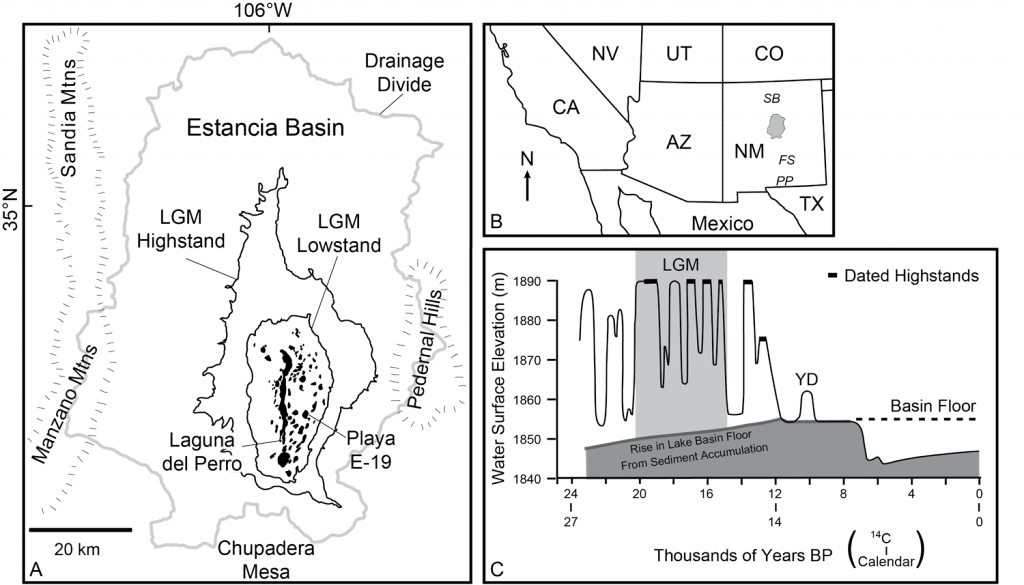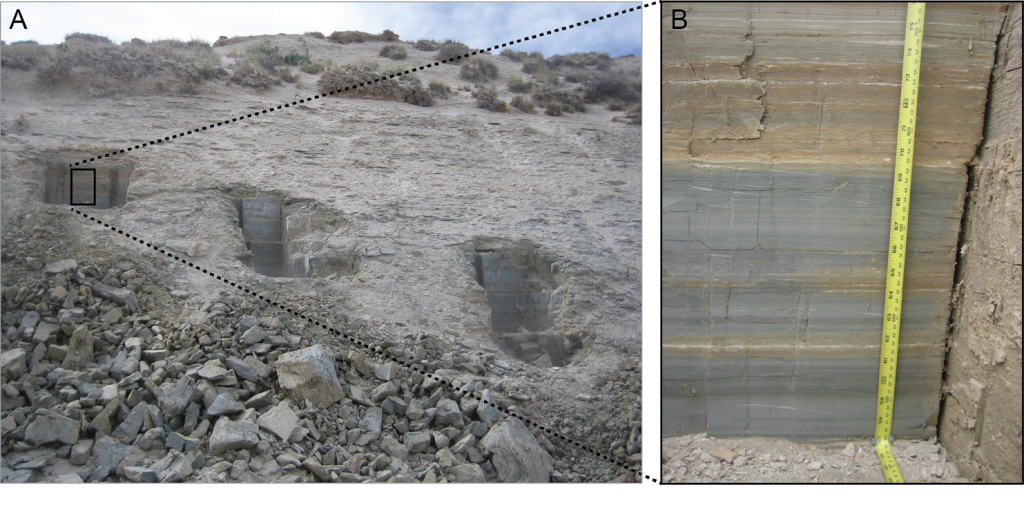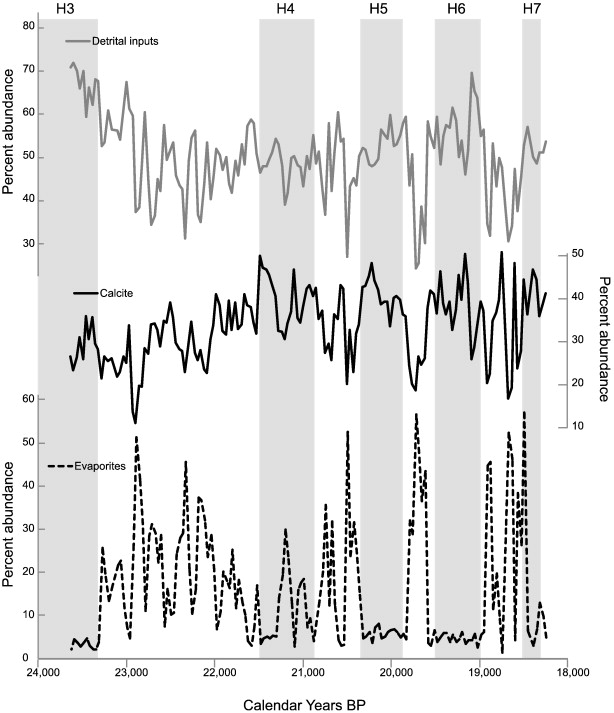Kirsten Menking (Earth Science)
Estancia Basin in central New Mexico was a very different landscape during the Last Glacial Maximum (LGM), around 20,000 years ago. What is today an arid environment was once a large lake, due to different climate patterns at the time. Sediment records from the ancient lake floor reveal changes at the lake that resulted in cycles of lowstands and highstands.

A) Map of Estancia Basin in central New Mexico, showing LGM lowstands and highstands as well as subsequent playas. B) Map of the southwestern US, with Estancia Basin shaded in gray. C) Lake level history of Lake Estancia, with about 10 oscillations between highstands and lowstands during the LGM. The vertical gray shading during the LGM shows the time period of this study.
To study lake level oscillations, sediment samples were taken. Sediment types included evaporites (formed during lowstands) and carbonates (formed during highstands). There are also detrital imputs: sediments eroded and washed into the lake during rains. Transitions between the different sediment types occurred over 1-2 cm, which corresponds to several decades of time–a rapid transition, in geologic terms. These transitions indicate shifts in precipitation patterns, with intervals corresponding with solar cycles.

A) Three vertically-overlapping trenches dug in the Laguna del Perro basin where LGM sediments were sampled. B) Photograph of the trench wall. Lighter tan/white layers indicate gypsum (evaporite) deposits. Gray layers indicate carbonate (lake) deposits.
Solar forcing–changes in sunspots and solar radiation–have predictable, consistent cycles. Impacts of these cycles have been recorded in other paleoclimate records, and are also seen here, with noticeable centennial and millennial-scale oscillations. Some of the prominent cycles occur at ~900, ~375, ~265, ~88, and ~80 years. This shows that external influences (solar cycles) can have dramatic impacts on Earth’s climate, including regional precipitation patterns.

Contributions to sedimentation: detrital input, calcite inputs, and evaporites. Gray-shaded bars indicate lake high-stands. During these highstands, evaporite percentages are low, while evaporite percentages are high during lowstands.
Menking, KM. 2015. Decadal to millennial-scale solar forcing of last glacial maximum climate in the estancia basin of central new mexico. Quaternary Research 83 (3): 545-54.
